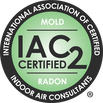Mike's Home Inspector BlogMichael Burfitt |
|
If you have ever seen me in action, you may notice that I tend to spend a relatively long period of time in the attic. There are several things I am looking for including:
While it is not part of a standard home inspection, I also carefully look for any evidence of the presence of pests. There are four major pests I look for that are common in Nova Scotia. Mice & Rats October is a time of leaves falling, Halloween approaching and colder weather coming. This also means that rodents are looking for a nice warm shelter. Unfortunately, mice can squeeze through holes as small as a dime and can produce up to 150 babies a year. Not only do mice carry a significant amount of disease, but they also love to chew electrical wires. Squirrels This is probably the second most common pest I have heard homeowners complain about. Squirrels are acrobatic and will chew through wires to enter an attic space. While disease isn’t as big of a concern, they can quickly wreck electrical systems. Raccoons These pests can tear through vents and mesh and are very intelligent. The biggest danger is that raccoons are very aggressive and will attack humans with their sharp claws. Fortunately, because of their large size it is more challenging for them to enter attics. Birds While I was out for a walk in my neighbourhood, I observed several birds flying in and out of an attic through a hole in the soffit. Birds not only carry diseases but tend to get very comfortable if not removed immediately. While they won’t chew like squirrels, they have the advantage of being able to fly to any hole to enter the attic space. What can you do to keep these residents from squatting in your home? There are a few common steps to take to be proactive. Remember, the best way to remove pests is to prevent them from entering in the first place.
While it can be very difficult to detect many of these pests, I am always on the lookout for evidence such as droppings, unusual insulation patterns and potential entry points. I hope to never have to encounter a pest in the attic and hope you never have to deal with the headache of removing them. Isn’t it ironic how we have gone from a handful of TV channels as a child growing up in the 80s to over a thousand today yet there seems to be even less to watch? Occasionally I flip through the channels (no pun intended) and see one of the too-many-to-name home renovation shows. The main premise is that the host finds a house with many problems and spends about a half hour overcoming unexpected issues before revealing a beautiful, remodeled home to the cameras.
There is no shortage of houses that are bought with the sole purpose of being renovated and sold quickly, usually within a few months. The common term for this type of property is a flipped house and those who buy these types of homes are known as flippers. Ask any home inspector their opinion of flipped houses is, and I doubt there will be many positive stories. The term “lipstick on a pig” is one I hear other inspectors throw around regularly and I can’t say I disagree with it. The main concern most home inspectors have is that flippers in general have a financial incentive to cut corners, especially in our current seller’s market conditions. There is a saying you might have heard that says “kitchens and bathrooms sell homes”. What this means is that important areas such as plumbing, electrical, roofing, etc. are usually not given as much priority as they should. I compare this to a refurbished car: sure, a new paint job, a reupholstered interior and shiny rims are great, but it is far more important to replace the engine, tires and transmission. Another concern is that many amateur house flippers, while well intended, simply do not understand the large scope of a home renovation and how difficult, complicated, and expensive a task like this is. This is made far worse by the construction boom we are experiencing, where many skilled trades are booked well in advance on one of the many high rise apartment buildings under construction in the Halifax area. When I was working in home improvement retail in the early 2000s one of the saddest things we saw regularly was distressed DIYers who got in way over their heads and ended up needing to have professionals re-do much of the home improvement work at significant cost and inconvenience. That isn’t to say that all home flippers are bad or are well-meaning-but-ignorant: there are many quality home flippers who care about providing a great home and a flipped house can be a great way to get a like new, turnkey house in an established neighbourhood. Often it can be difficult to tell whether a home rehab was comprehensive or just done on a surface level and for these reasons and more it is important to always have a flipped house inspected prior to purchase. Home inspectors have the training and experience needed to look past shiny cabinets or granite countertops and towards what is ultimately most important in maintaining an affordable, safe, and healthy home. Hopefully with the help of a home inspector your flip doesn’t become a flop. Being a homeowner can mean having to make many large financial decisions even after the home has been purchased and the closing costs have finally been paid off. One such major expense I see more homeowners making is installing heat pumps, in particular retrofitting older homes with a ductless mini split system. We completed this task on our home in the winter of 2020 and you may be wondering if it was worth it? My answer is simple: YES!
Let me first mention the drawback, and it is a big one. Costs can vary but $10,000 is a good ballpark estimate for installing a mini-split system. While financing options are available and these units more than make up for it over time in energy savings there is no getting around the fact a significant upfront investment is involved. They are also not very attractive to a home’s decor (some recent models, however, look just like artwork on a wall) and while I have no issue with its appearance, others may not feel the same. As for the benefits, they are many and here are just a few: Reduction in Heating Bills The most obvious benefit can be seen in your heating bills, especially if you have an all-electric heating system like we did. Even considering that 2020 was the first winter we had a baby in the home and subsequently turned the heat up all day long, our power bill still dropped by almost 40% during the coldest months! Even in the summer we only went up about 15% and considering the incredible difference in comfort that was a price well worth paying. Given how energy costs are rapidly rising this is also a good buffer against sharp price increases. Can Run Dual Heating & Cooling Duty Heat pumps are basically Air Conditioners (or Refrigerators) that can be run in reverse, where the two heat exchangers switch between acting as an evaporator and condenser as the season (or in Nova Scotia, day) changes. As a result, they provide year-round comfort on even the coldest days. Even on those crazy weather days where we go from cold to hot to cold again, they can seamlessly switch between heating and cooling automatically and efficiently. As the name implies, ductless mini-splits do not use air ducts as working with existing ductwork is usually difficult due to density differences between hot and cold air. Side note: I once took a course on air system design and let’s just say it’s best to leave it to the pros! If there is room in the electrical panel then no complicated electrical work is necessary. Even the large amount of moisture removed by the system in the summertime usually drains outside without the need of a drain pan or other maintenance. Easy to Maintain While I always recommend an annual checkup by a qualified HVAC (Heating, Ventilation & Air Conditioning) technician, the only maintenance required by homeowners is to regularly clean/change the filters and keep snow and other debris away from the outside unit. Quiet Like any appliance with a compressor, heat pumps make varying levels of noise. However, it is almost exclusively made outdoors, well away from the inside of the home. The noise level is comparable to a fan on the lowest setting most of the time and even at its worst it is barely noticeable. The biggest myth I see about heat pumps is that they are not suitable for cold weather. The fact is some units can operate efficiently right down to about -26C/15F, which is more than adequate for even the coldest days in our Nova Scotia climate. Heat pump technology has grown by leaps and bounds in the last decade and will likely only improve over time. Do I recommend getting a heat pump installed if reasonably possible? You bet! One of the great things about being the founder and president of a small company is that I can handle many of the business tasks myself and nearly everything is handled by our family. This gives me great freedom to provide outstanding value and go the extra mile (or 1.6 kilometres if you prefer). I personally answer all calls, read all texts and emails, and give clear answers to all inquiries even if I believe another professional would be better suited for your needs. It is great to be free to speak without following a corporate script but there are a few phrases you will never hear me (and hopefully no other home inspector) utter.
This House is Overpriced/A Great Deal/Just Right I certainly have personal opinions on the current housing market, but they are just that: personal. As a professional home inspector who also completed a business degree, I have extensive training in the subject of making optimal financial decisions within budget constraints. However, this is beyond the scope of an independent home inspector. You will never hear me advise whether you should buy a house or not, but I will alert a client if I believe their expectations are greatly misaligned with my observations, such as expecting a turnkey home when it needs extensive maintenance. The Home is Full of Dangerous Mold/Asbestos Contrary to popular belief, there is no way to identify ‘toxic’ mold or asbestos from a visual examination alone. Are there signs that a house almost certainly has issues with either? Absolutely but there is no way to be 100% sure without a lab test. While beyond the standard of a home inspection I usually alert my clients if further testing or evaluation is recommended but you will never see me make any definitive statements because they simply cannot be made in the field. Call Me to Fix This Issue One of the many requirements of being a member of InterNACHI (the International Association of Certified Home Inspectors) is to follow their code of ethics (InterNACHI Code of Ethics). This is more than a meaningless platitude: everyone who is affiliated with our company is expected to follow it without exception. One such requirement is to avoid all real or perceived conflicts of interest. Therefore, while I fancy myself a bit of a handyman, we InterNACHI members are not permitted to perform repairs for an extra fee for 12 months. Yes, I will occasionally tighten a loose screw or clear a gutter blockage if I am safely able to, but you will never see me charging extra. The inspection fee is the only price I charge and if the inspection takes far longer than expected you still don’t receive any additional invoice or other hidden charges. Please Listen Closely to Our Menu Options Few things annoy me more than calling a company and having to navigate unclear menus only to be sent to the wrong department. Amazingly these same companies almost always have a ‘higher than normal’ call volume and my ‘call is important’ despite spending significant time on hold. While I am frequently away from the phone, make no mistake I will always call back as soon as possible and will give you a clear answer to your inquiry. I am aware that the majority of people calling me can be under a great deal of time pressure and stress, whether it be because they are dealing with the various steps of a real estate transaction, dealing with one of the many issues that being a homeowner can throw at you or are worried about a potential structural problem you can rest assured that we will not add to that stress and can give you clear, immediate answers without having to deal with a headache inducing call centre. I heard it once said that when cooking or baking, a cookbook is just a starting point to build mastery in the kitchen: true skill comes from building off that book knowledge using skills and experiences. This is also true as a professional home inspector: I have completed a significant amount of textbook reading (I lost count how many I have in my library!) but I know there are times where I disagree with the “book” answer and many fellow home inspectors. One such example is Polybutylene (PB) otherwise known as Poly B supply pipe.
PB was a plastic manufactured between 1978 and the mid 1990s that was touted as the “pipe of the future” for its low cost and ease of installation compared to copper. Despite its many advantages, it was discontinued in 1996 due to allegations the pipes were rupturing and causing significant water damage. Class action lawsuits were filed in the United States with a payout of close to $1 billion. Try doing an online search and you will see plenty of PB horror stories: sounds terrifying, doesn’t it? While all these facts are 100% true, it should be noted that most of the issues originated in the southern United States, where supply pipes can be run through an extremely hot attic. Furthermore, most of the PB issues occurred at joints, which were often poorly made with plastic fittings by plumbers unfamiliar with their installation. In my experience, the PB systems I have inspected in the Halifax area are usually high quality with copper fittings (like the smaller of the two pictures below). My own home has PB throughout and I have no concerns whatsoever about its potential for leakage over any other type of material. Plumbers I have spoken with over the years have informed me that PB failures are rare, and they generally do not recommend replacement of a PB system that has no evidence of leaks. Having said all that, it’s not a system without problems: it can be damaged by heavily chlorinated water (I know from firsthand experience how chlorinated the water was in Dartmouth before 1999), there is no way to verify that PB is not damaged without invasive testing and some insurance companies look negatively on a home with PB and may charge higher premiums accordingly. So, how do you know if you have PB? Aside from the obvious answer of calling us at Inside Edge Home Inspections if you live in the Halifax region, there are two telltale signs:
Don’t mistake this post as an endorsement of PB: it was no longer considered an acceptable plumbing material in 2005 and is inferior to both copper and other similar types of plastic-based plumbing like cross-linked polyethylene (commonly known as PEX) or chlorinated polyvinyl chloride (CPVC). It is my opinion based on my professional experience that while PB should be monitored for leaks (like any plumbing system), an expensive re-plumbing of a home is rarely necessary. Can a PB system fail without warning? Yes, it can but so can any type of water supply line. |
Archives
July 2024
Categories
All
|
|
Inside Edge Home Inspections Ltd.
Halifax, NS 902-209-9921 [email protected] Proudly Serving the HRM & Central Nova Scotia |
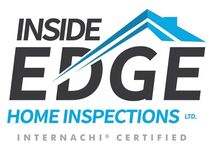
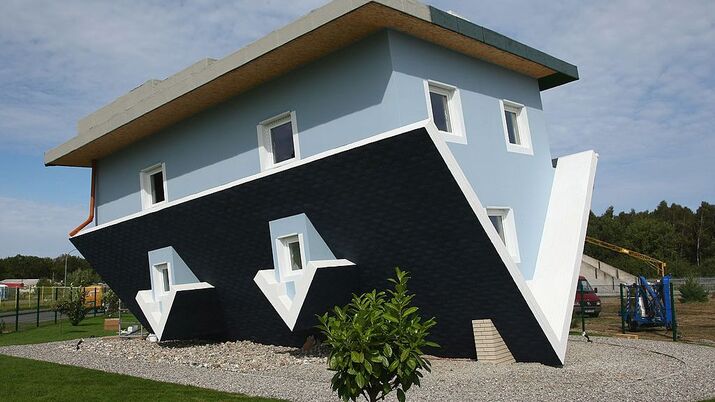
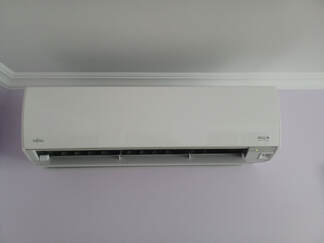
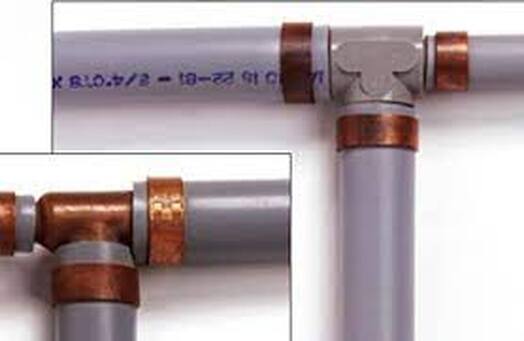
 RSS Feed
RSS Feed

